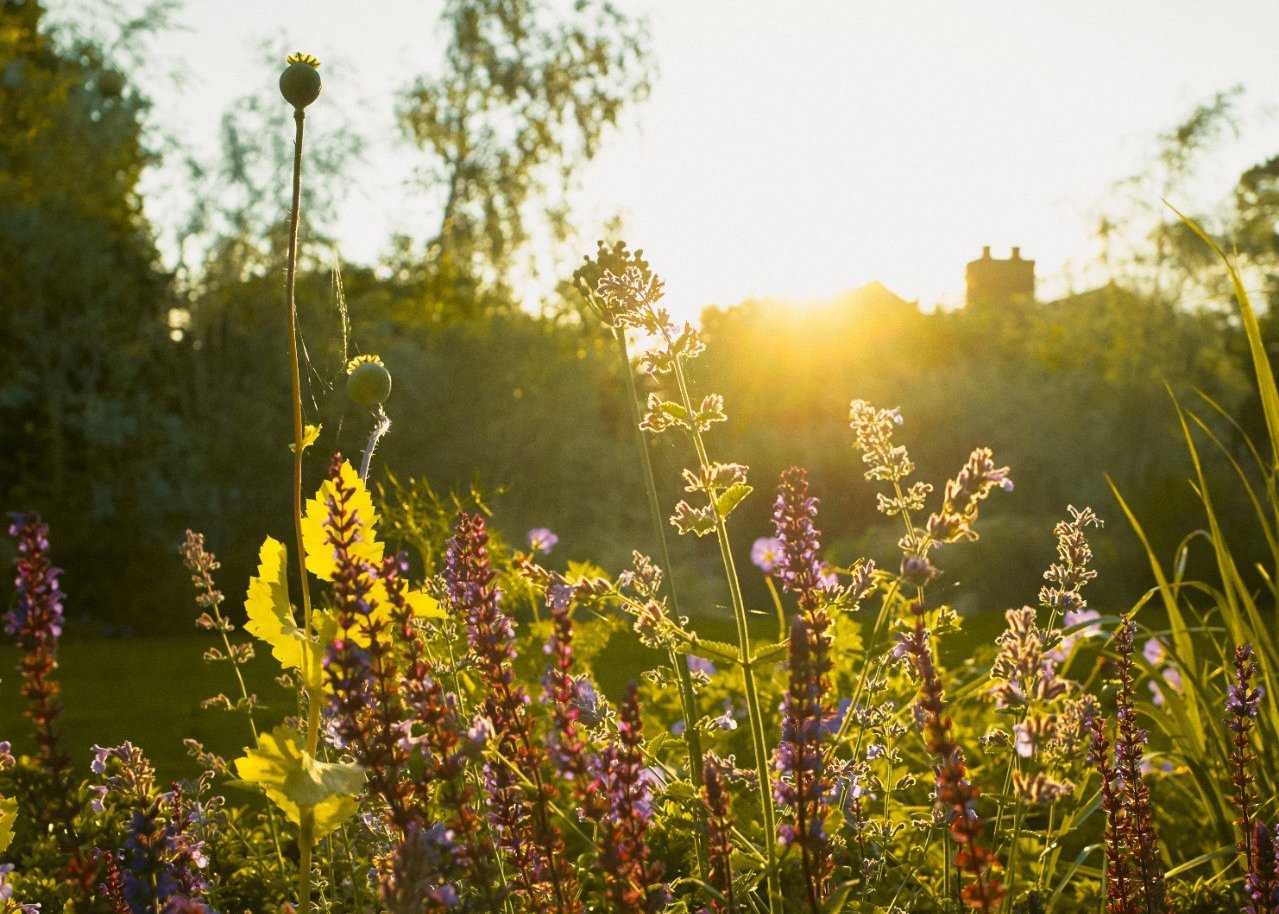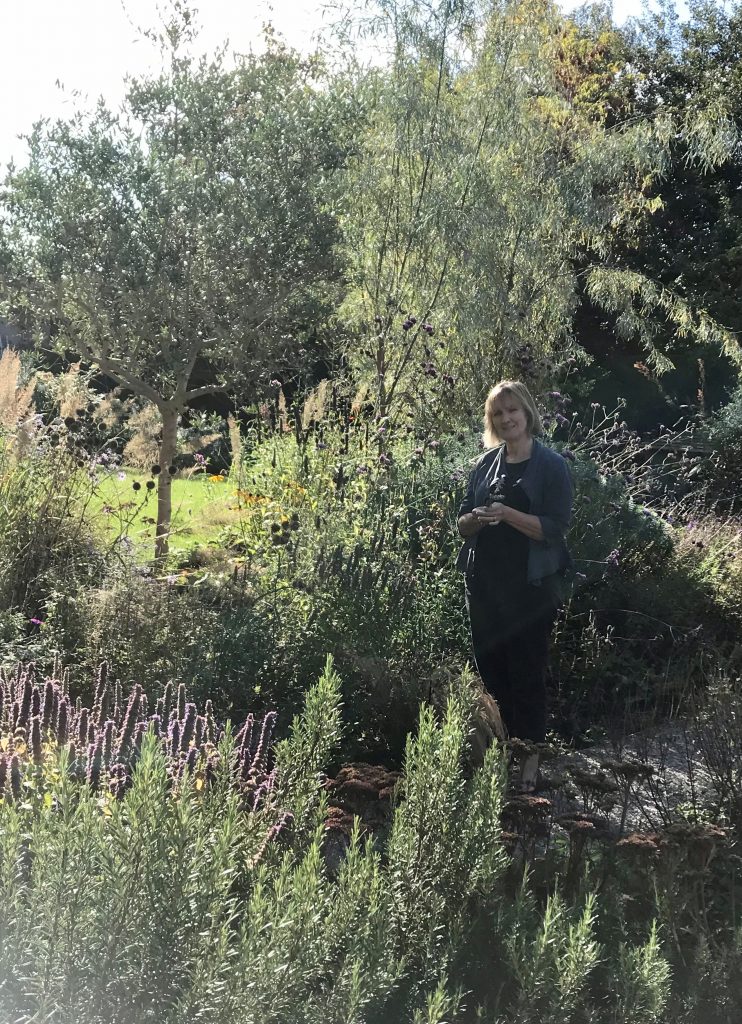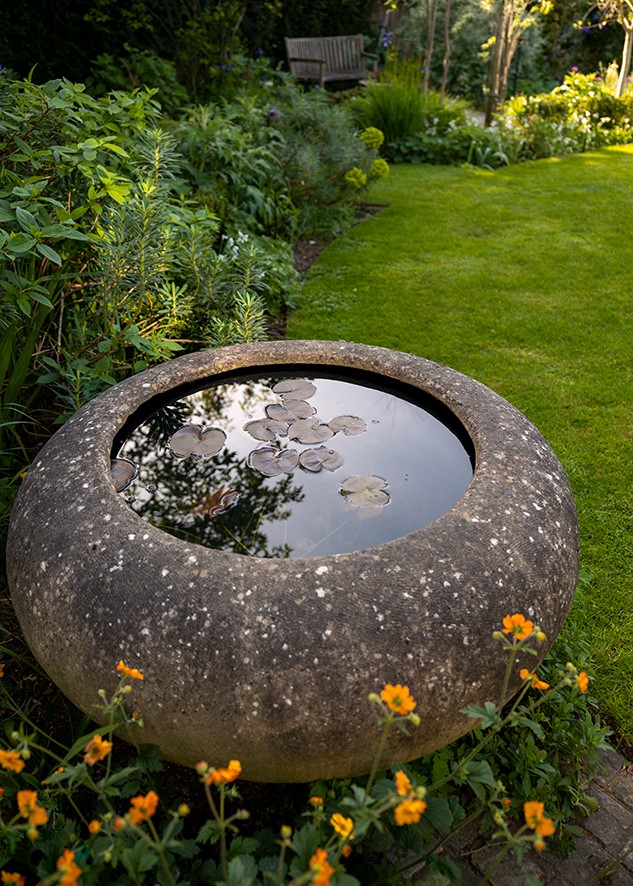Gardens for people and wildlife

Award-winning garden designer, and National Garden Scheme garden opener, Selina Botham takes us through her philosophy of designing gardens for people as well as wildlife…
My philosophy in our own garden (open for the National Garden Scheme) has been to design for people as well as wildlife. So often a ‘wildlife garden’ is just an unstructured mess and as a garden designer I wanted to be able to show people that a wildlife garden can also be attractive to people.
The benefits are:
1. Less work on maintenance
2. Lots of amazing wildlife to enjoy
3. More green in the world
Planting style
Planting in blocks of nectar rich perennials attracts bees and butterflies and is easier to look after than individual plants dotted around. Purples and yellows seem especially attractive to insects. The river of planting is probably the best insect dining facility in this garden and it flowers from May to October and is covered with bees and butterflies.
The seasons
A good mix of flowers over all the seasons helps wildlife (as well as people). Trees provide useful early nectar too. We have cherry trees, amelanchier lamarkii (good for flowers in May and berries in July). The cotoneaster and also a huge euonymus tree/shrub are hugely attractive to bees and all manner of flying insects. The euonymus is literally ‘humming’ throughout the summer. We are lucky that our neighbours all like trees and wildlife too so we share a backdrop of trees and shrubs. Winter flowering plants are always visited by bumble bees on a sunny day in winter, so I know they appreciate them.
The pond
This is a big draw for wildlife, with frogs, newts, dragon flies and water boatmen. Birds bathe in the shallows and foxes drink from it. It’s thick with oxygenating weed this year, so in the winter I might reduce the coverage. It’s a balancing act to keep the water cool enough so it doesn’t go green but still have some open water which is really nice for the reflections.
Natural water bowls
Using just oxygenating weed and snails, a large water bowl feature can be kept completely clear and fresh without any chemicals and very little work, just an occasional clear out of the sludge.
‘Weeds’ in the lawn
These are really important to help increase the biodiversity within the garden. Clover and self heal are my fav. as they attract bees. I do weed out dandelions by hand because, although they are good for wildlife, they get too big and are too dominant. No feed or weed killer is ever used.
Overgrown areas of planting
Wildlife love these, as there is plenty of shelter here. I have planted cornus and other shrubs behind a yew hedge and this stays undisturbed for much of the year. Frogs and toads can hide under the log piles that I leave here with piles of leaves and branches behind both of the garden buildings and these make brilliant hidey holes for all kinds of wildlife.
Stag beetle loggery and piled sticks
A carved silver birch bug hotel from an RHS show garden provides a ‘designer’ bug hotel. Wood as it rots down is very attractive and interesting and I use found wood as art in the garden. A stag beetle loggery makes an attractive sculptural form and the buried wood provides a home for the stag beetle larvae. I use log piles as part of the design too.
Take the collateral damage
If you have wildlife they will cause damage! This is hard, especially when there is an open day coming up, but I do let nature take its course and don’t use chemicals. You will see slug and snail damage as well as caterpillars, black-fly etc. I do pick up slugs and snails and use copper wire to make a barrier around some plants. I also pull off Rosemary beetles. Planting plenty of one type of plant means there is enough to share with wildlife.
Use wildlife corridors and hedgehog highways
By leaving gaps under the fences I am doing all I can to let wildlife roam freely. Hopefully someone will come who wants to eat my slugs and snails! We are always hoping that we will attract hedgehogs. Talk to your neighbours, so you can work together to help wildlife.
Plant layers and leave seed heads
Trees and then an under-storey of shrubs with perennials below adds to the mix of habitats and food. Berries and trees attract the birds. Leaving the seed-heads up all winter means that you can enjoy the shapes all winter and the birds can enjoy the seeds and use the grass flowers to make nests. I have had goldfinches in winter, feeding on the verbena and agastache seed in particular.
Green roof
We have a sedum roof over our ground floor extension, this is both beautiful and good for the environment. I can’t recommend them highly enough and they can be installed on sheds or bike stores too.
Garden design for people and wildlife is satisfying and enriching both for us, our families and friends and the wider environment.
This article was originally published in The Little Yellow Book of Gardens and Health
For more about Selina Botham visit her web site www.designsforallseasons.co.uk – to find out more about ‘Garden Bathing’ click here
Visit Selina’s garden in Surrey when it opens in May and September. For details CLICK HERE





















